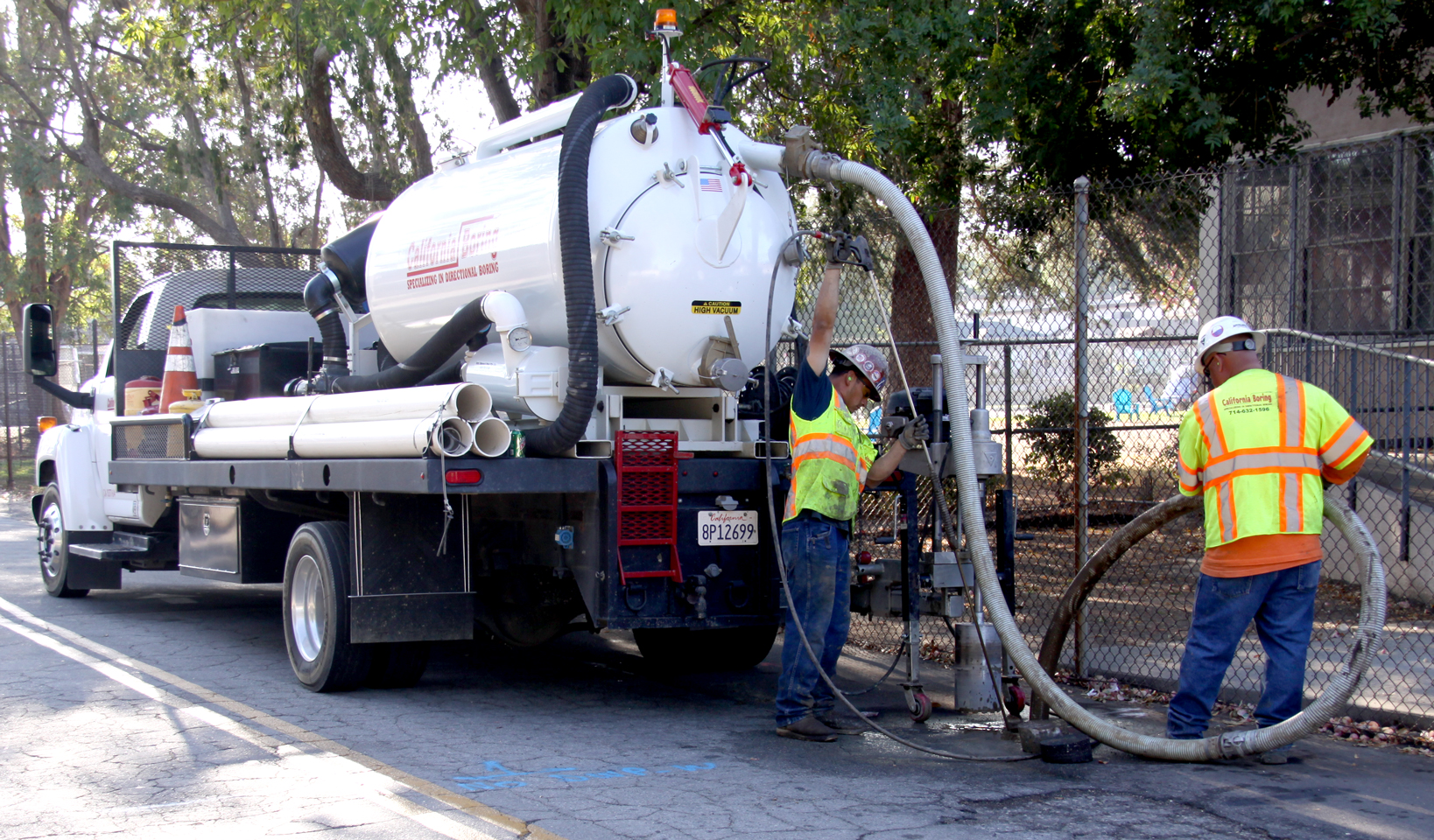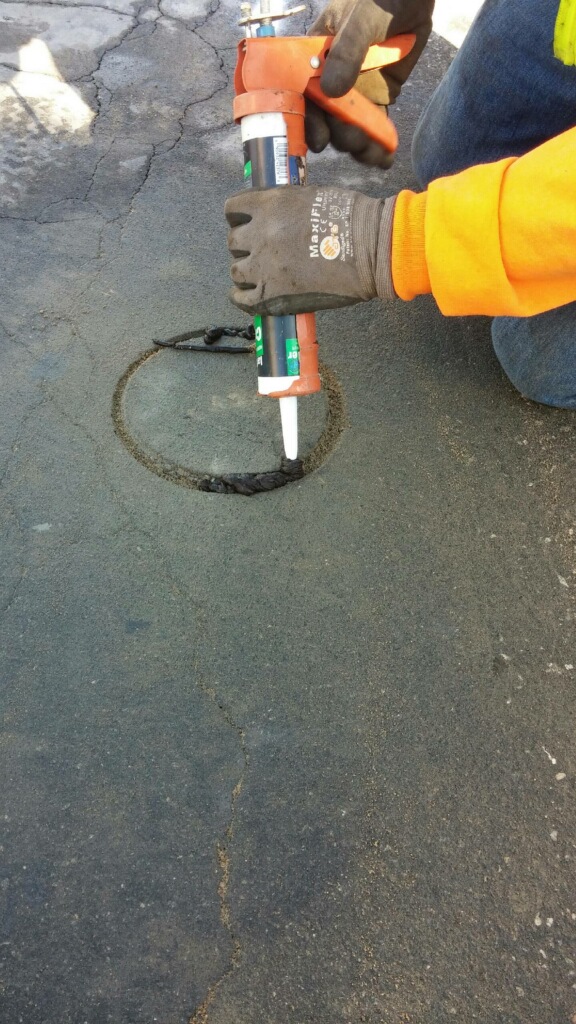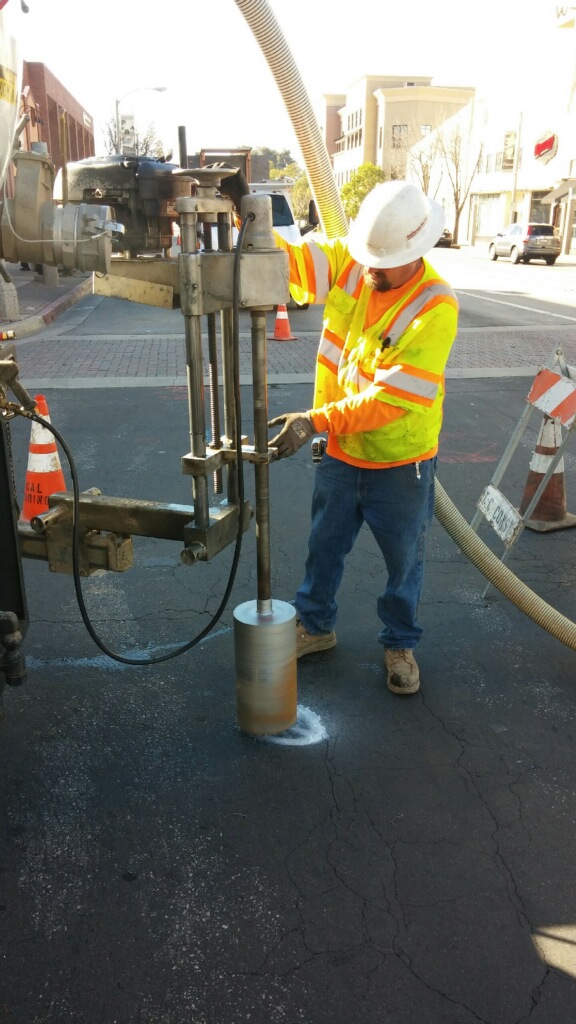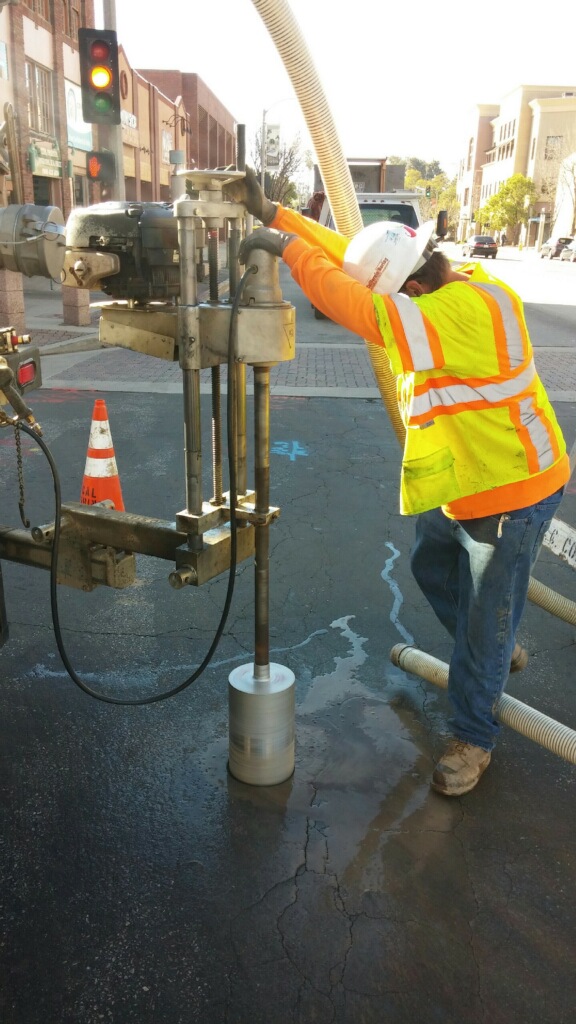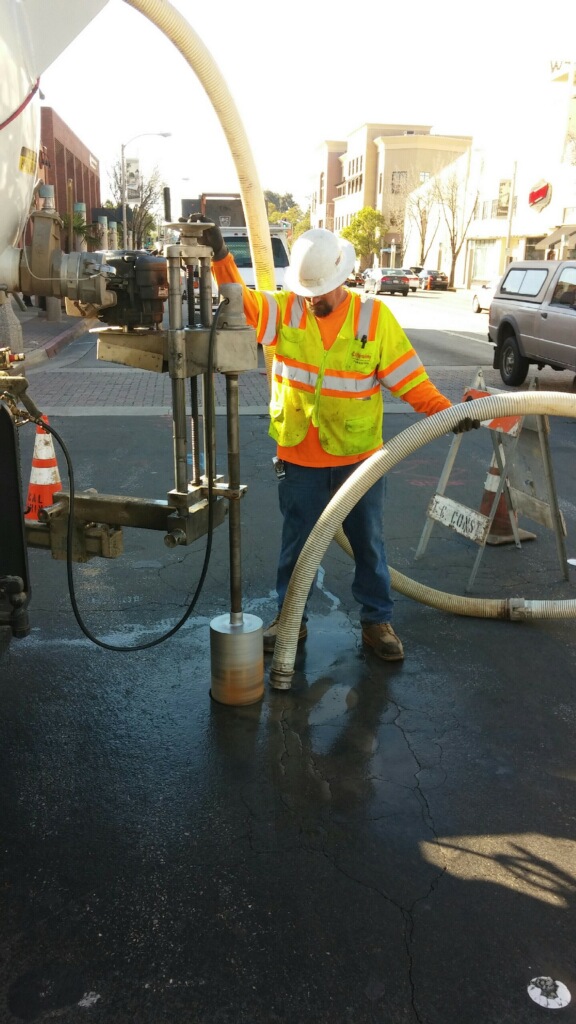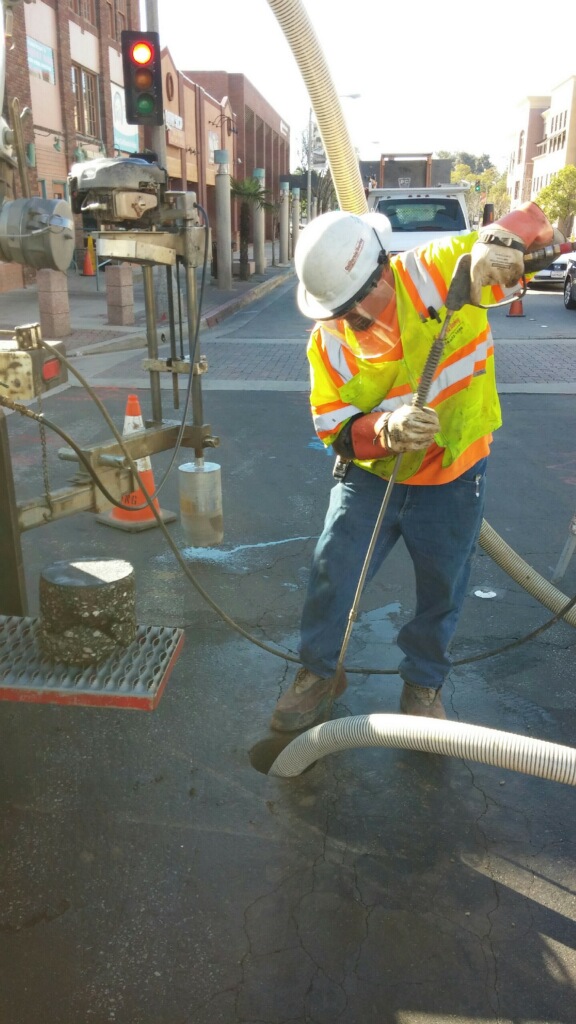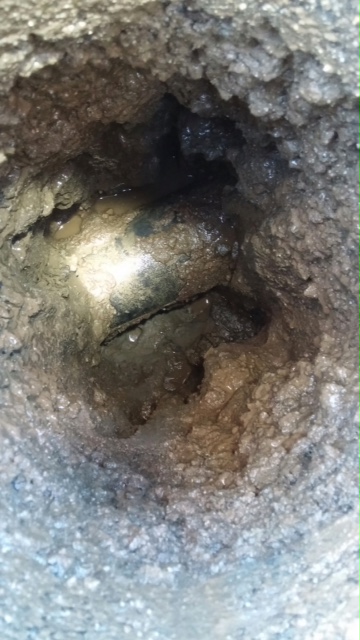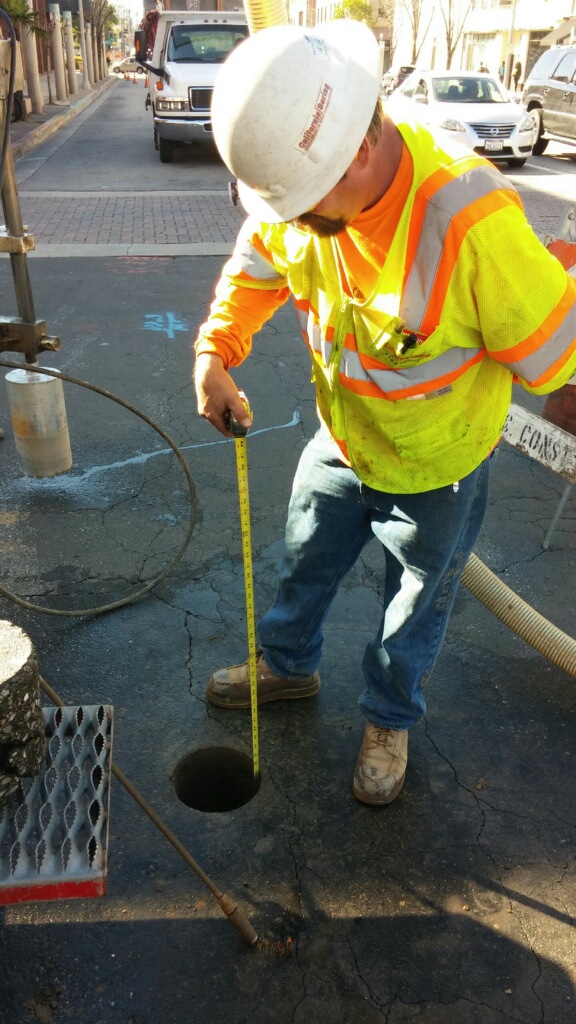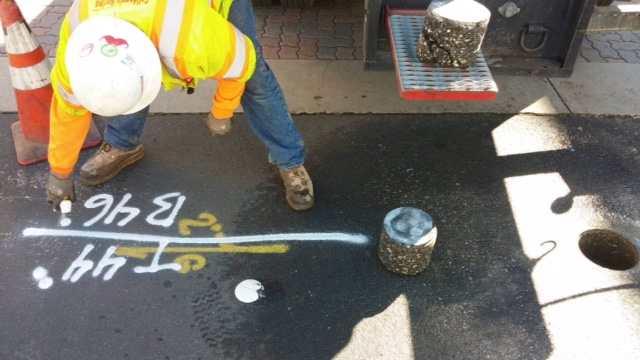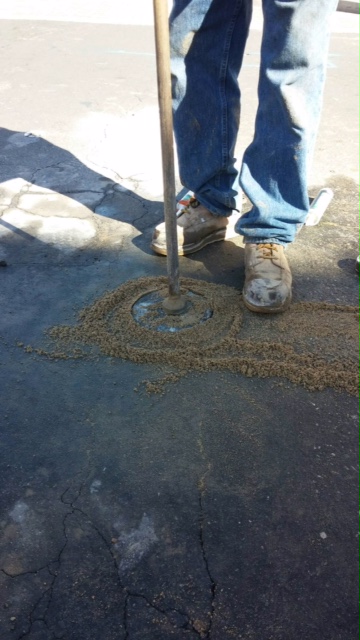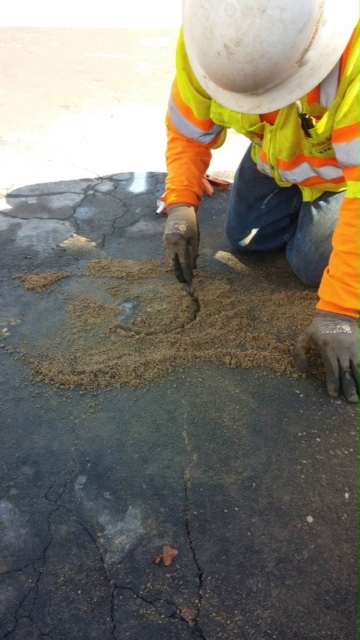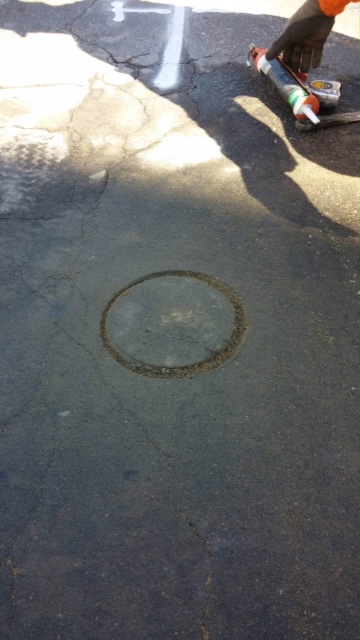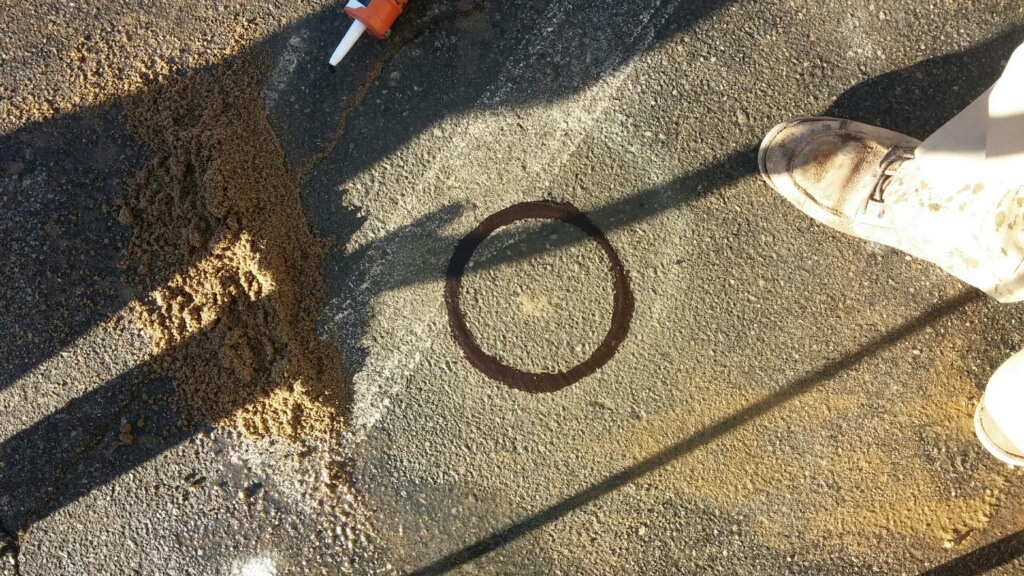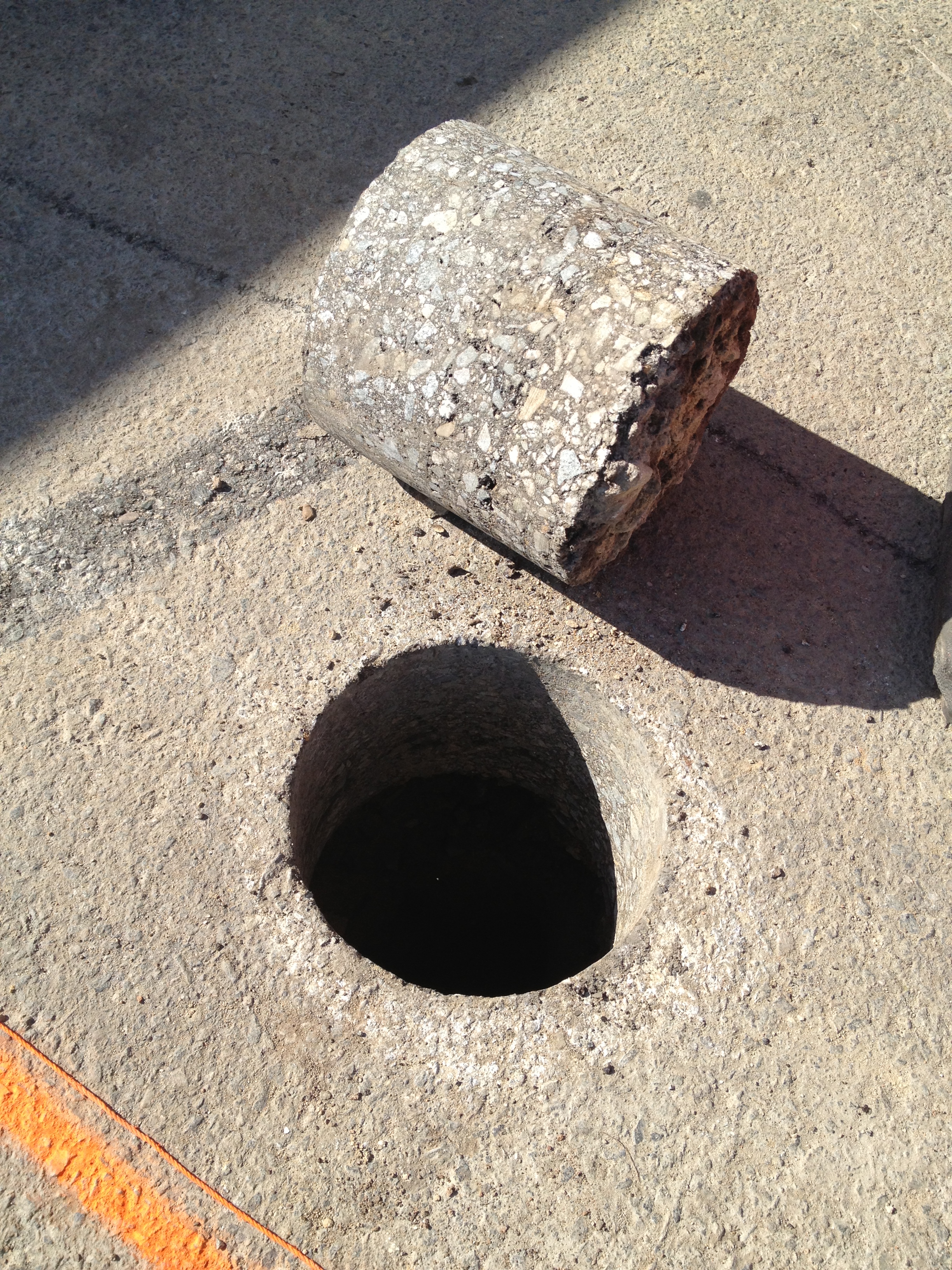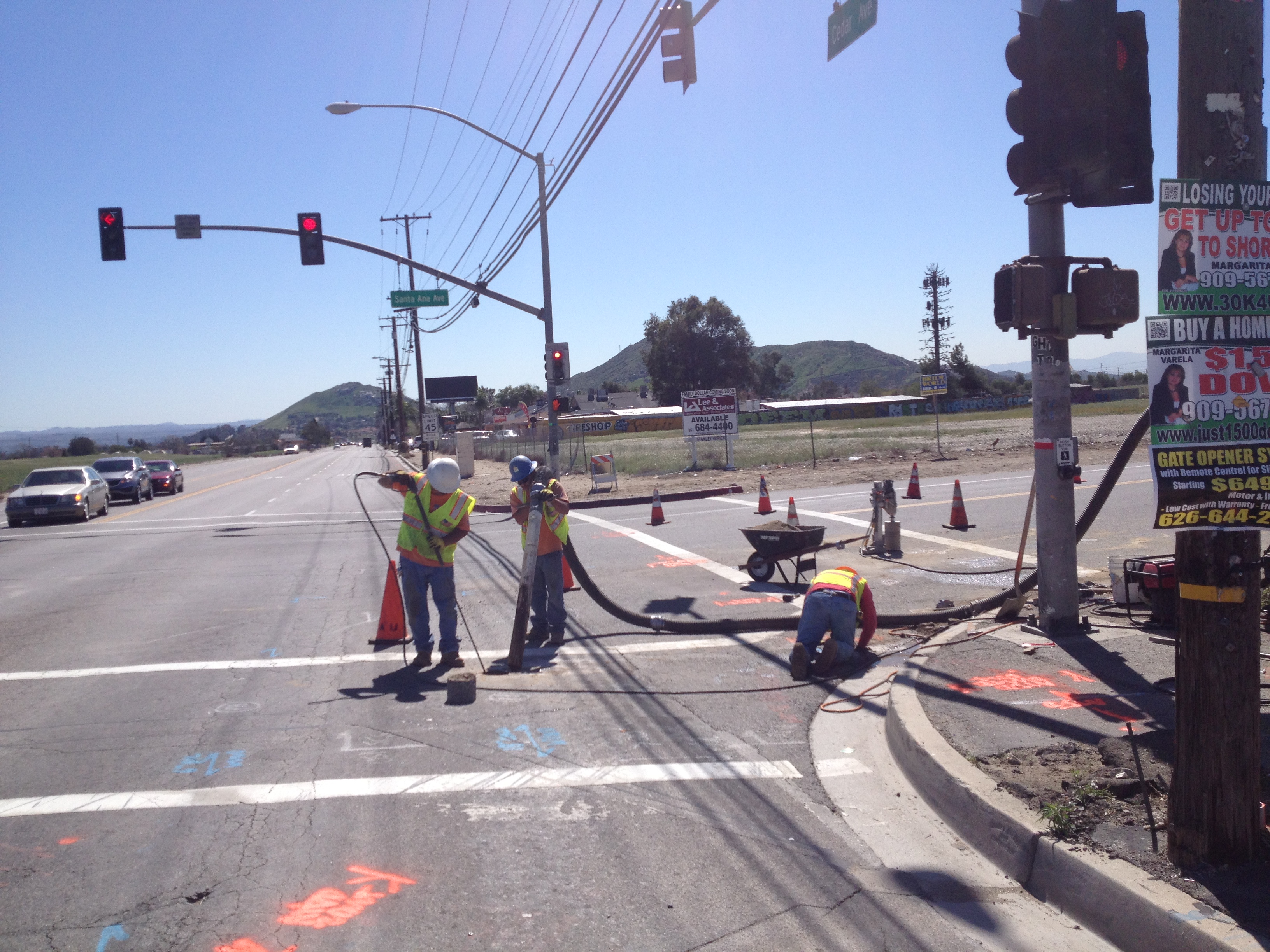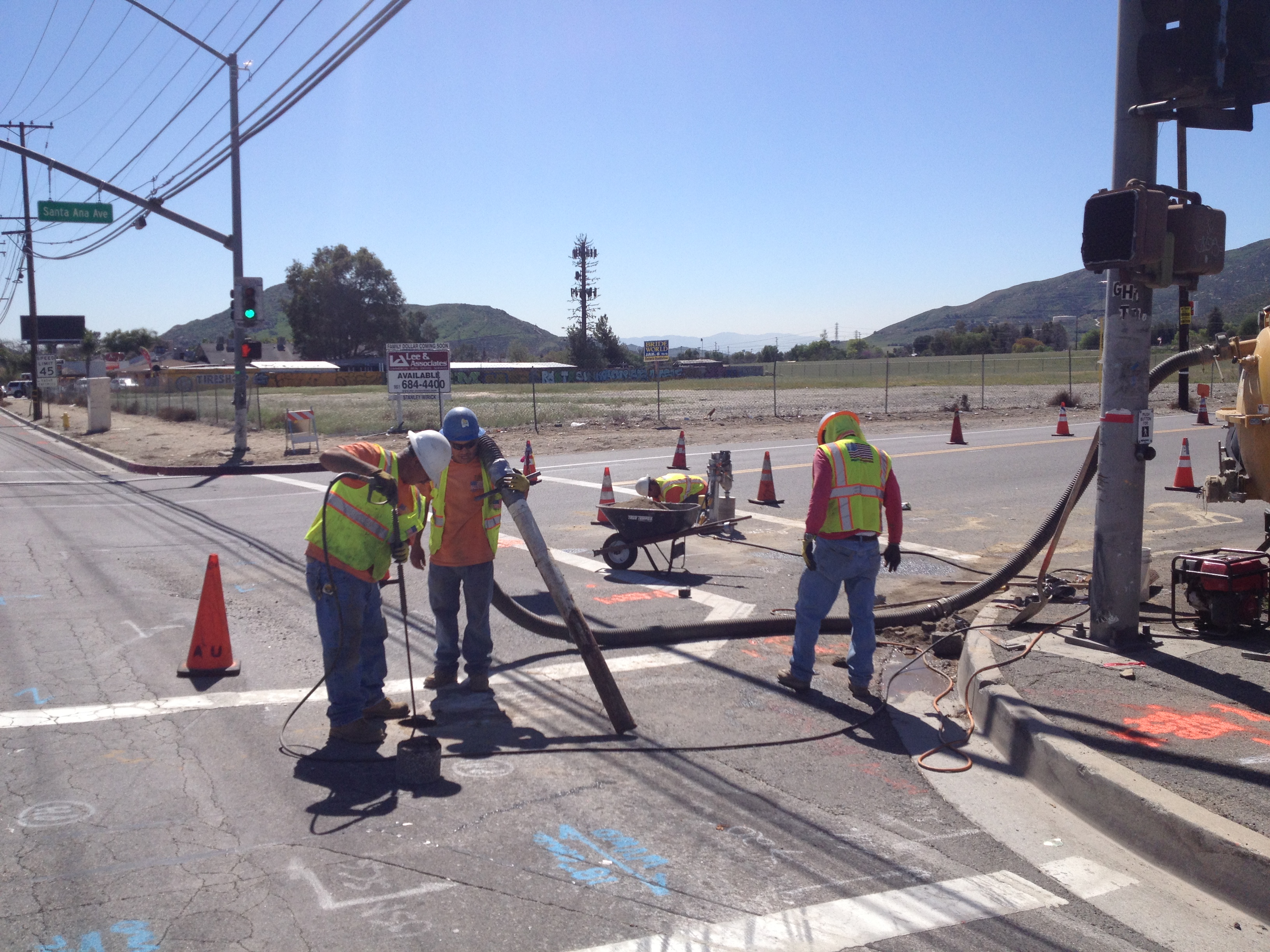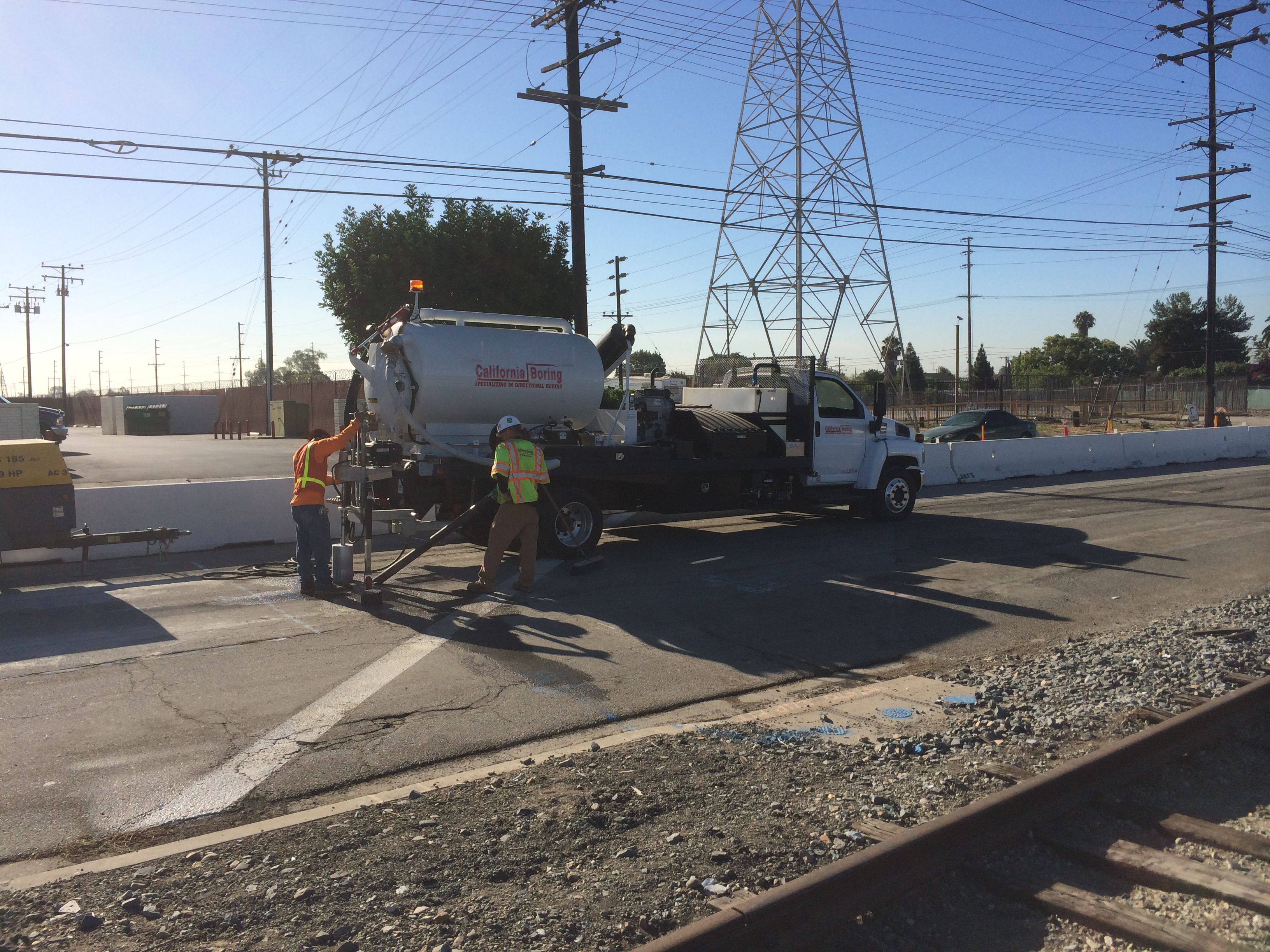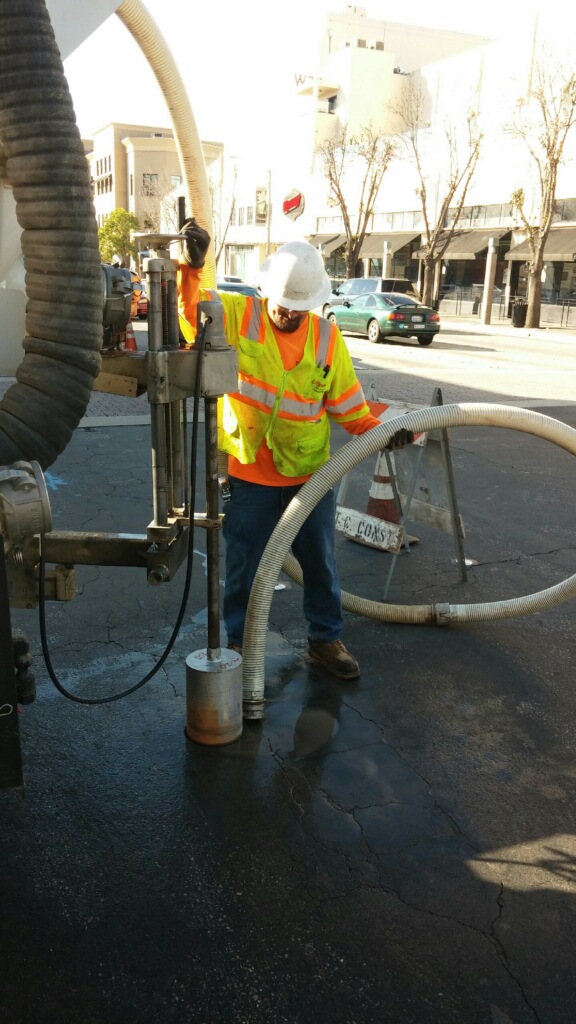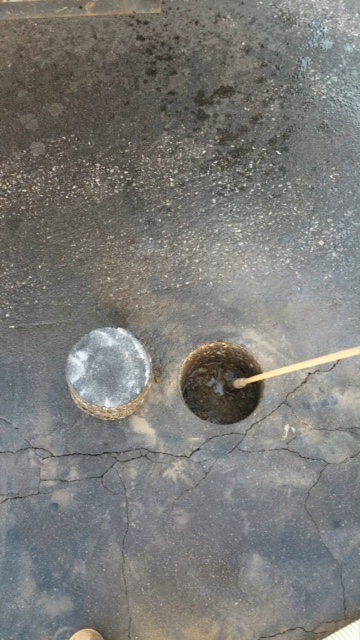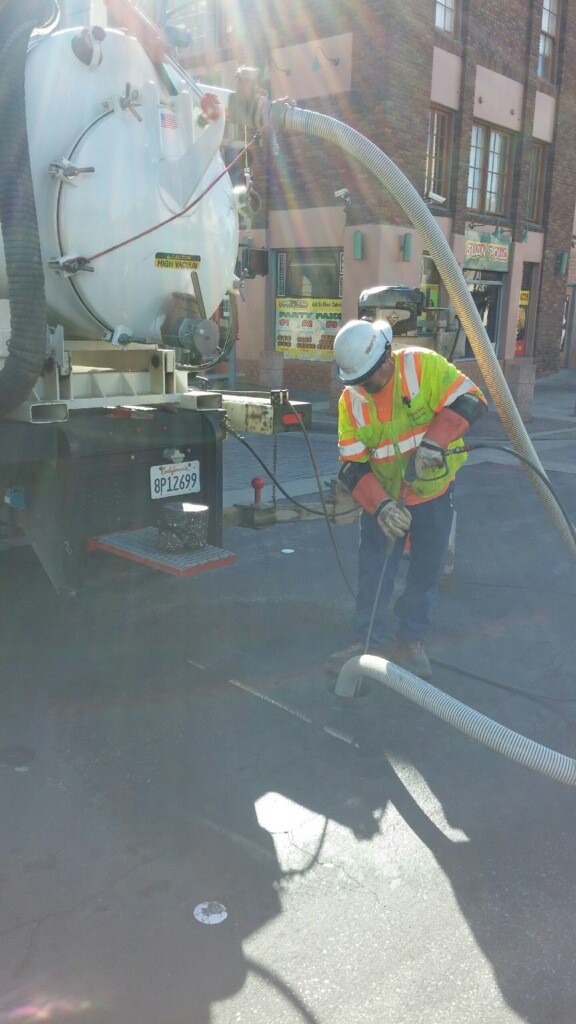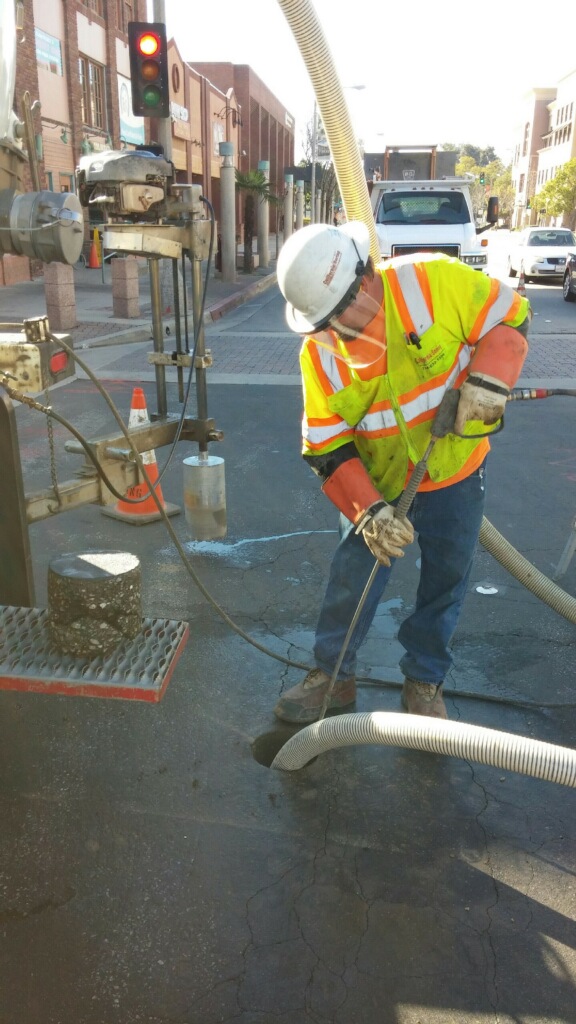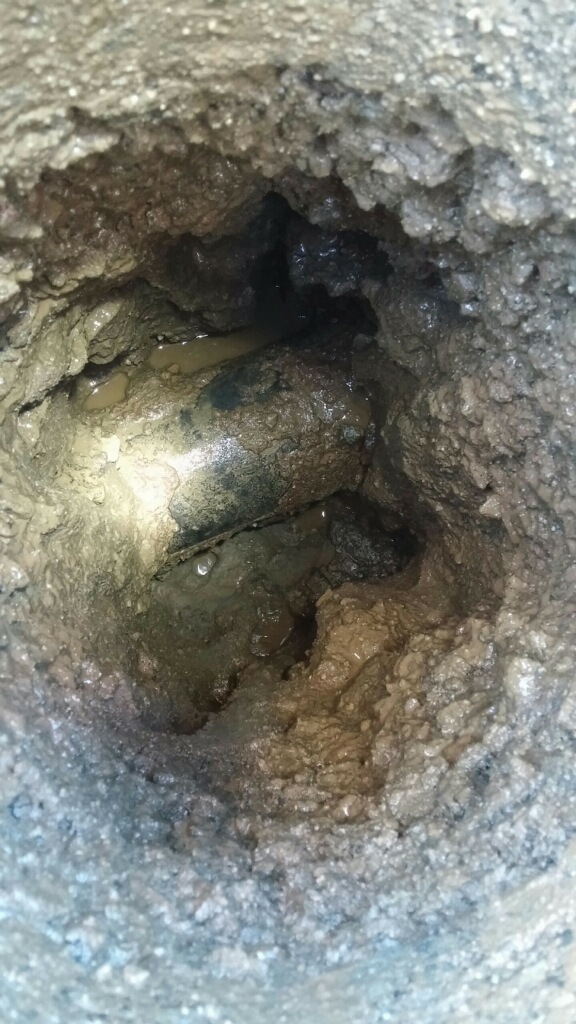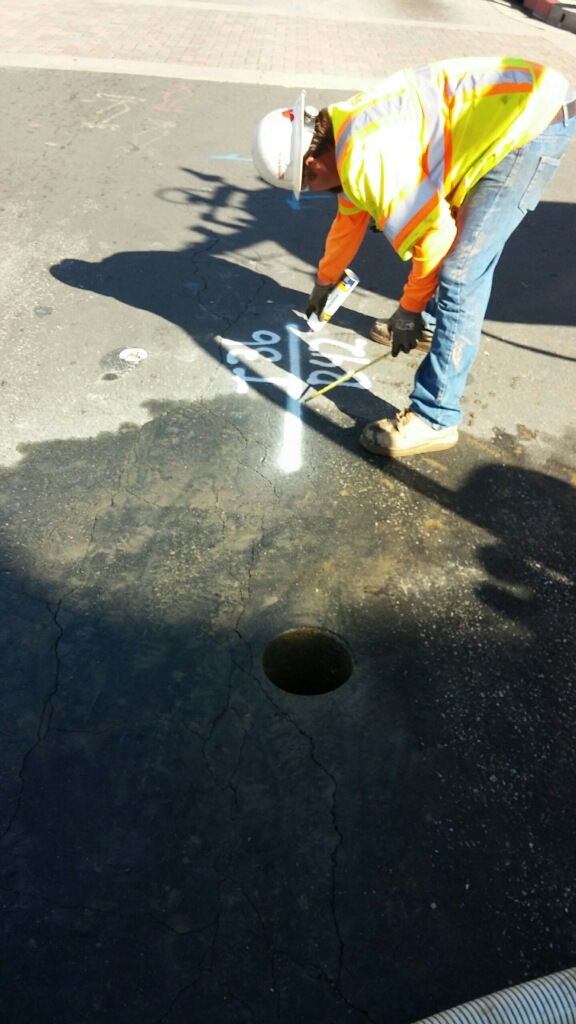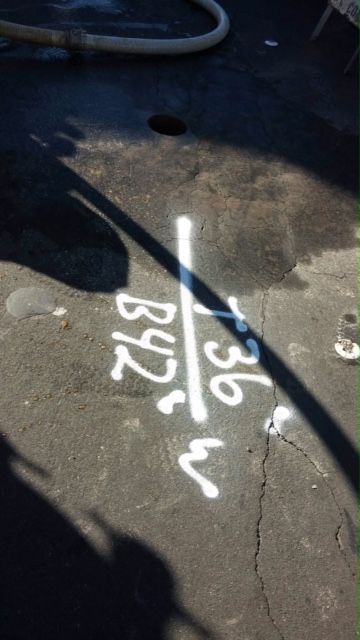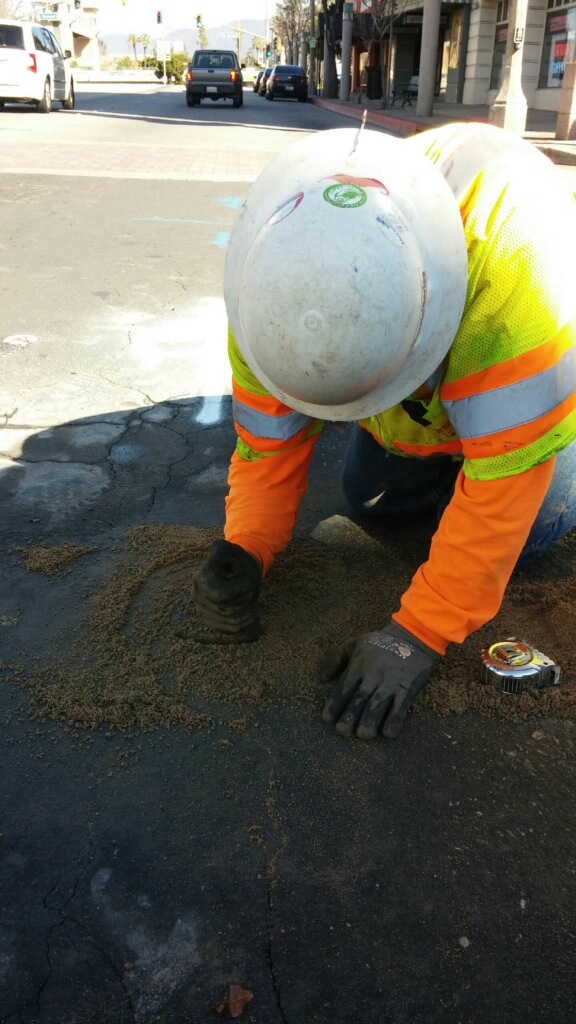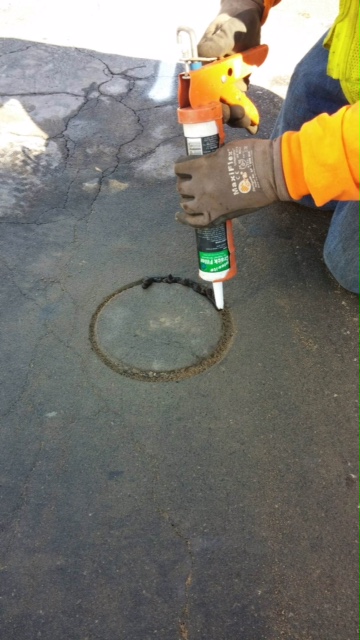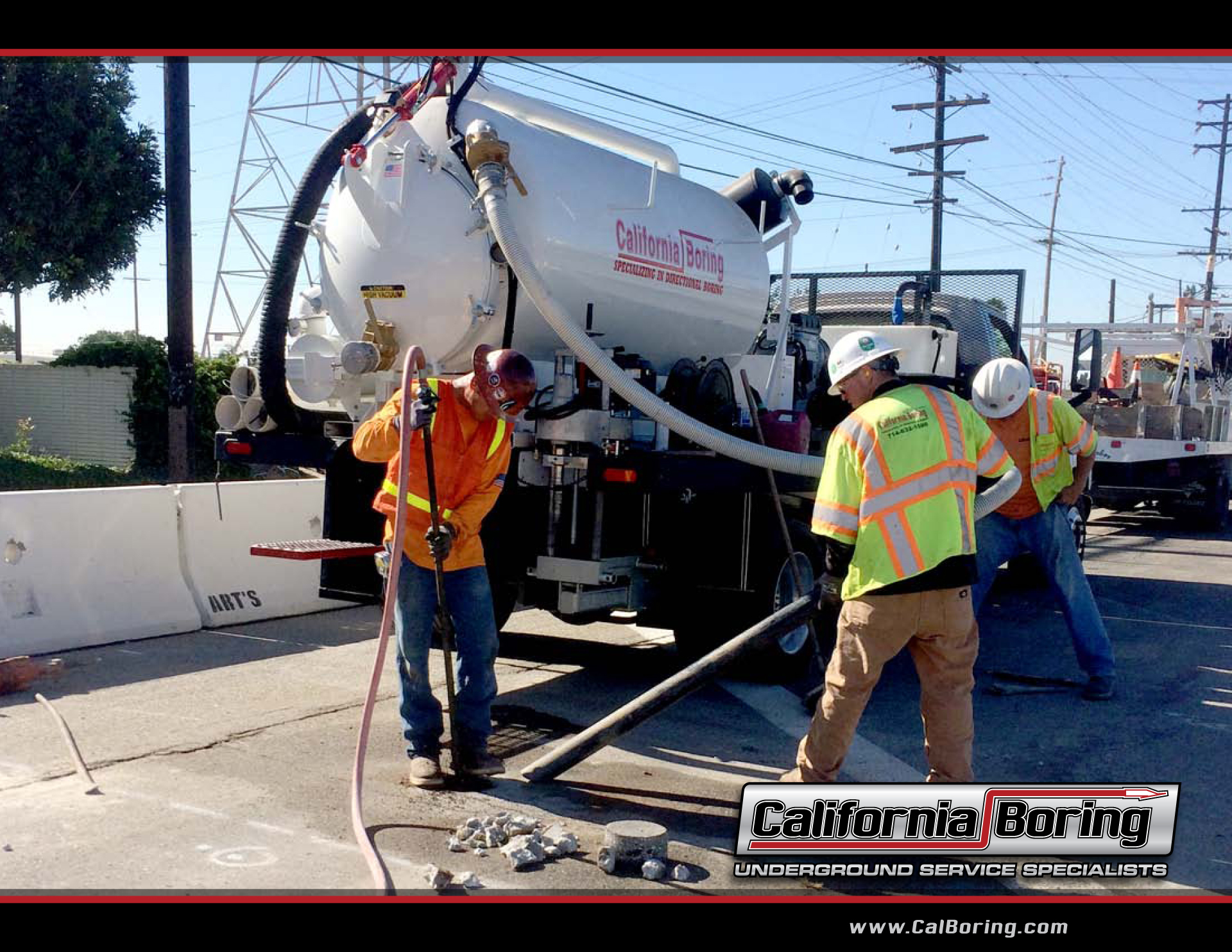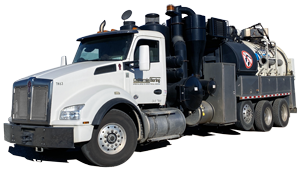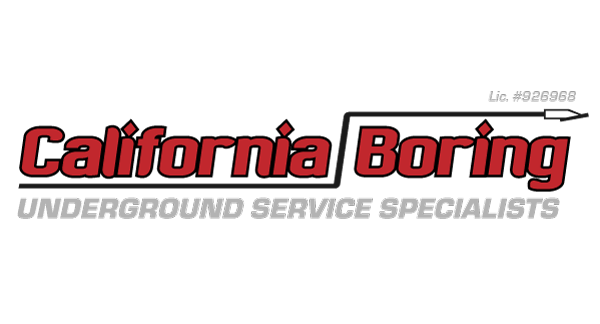
Potholing
California Boring - Potholing Division
Our state-of-the-art potholing equipment increases overall project production with minimal site disturbance, safely and efficiently. Our vacuum excavation method minimizes the risk of utility damage. All field verified utilities are documented for type, location, depth, size, quantity, and ground conditions.
The use of vacuum excavation for potholing is rapidly becoming the industry standard. California Boring utilizes the latest potholing technology to safely and economically locate, identify and document existing utilities. We use a process in which we core an 8” hole in asphalt and/or concrete. The soil is then removed by vacuum excavation to expose the top and bottom of the utility. The top and bottom depths of the utility are then recorded, as well as pipe type, diameter and pavement thickness. The excavation is then backfilled with sand and compacted. Typically the cores can then be replaced and sealed. The process is efficient, low impact and clean. California Boring additionally offers numerous other types of restoration and documentation per the clients request.
Documentation Options
Standard documentation: All utilities are documented on a carbon copy document. Each utility recorded with a number that corresponds with a sketch for location purposes. Each utility is then documented with top and bottom depths as well as type, diameter and pavement thickness. Standard documentation is ideal for preconstruction.
Photo and Benchmark Documentation: Each utility is recorded on its own document with a picture of the utility as well the information provided in the standard documentation. The utility is also benchmarked with a monument containing the utility number and depth. Photo and Benchmark documentation is ideal for the engineering process.
Restoration Options:
Backfill: In lieu of sand backfill, slurry or class II base can be utilized and compacted around the utility.
Restoration: In lieu of core replacement, temporary asphalt, hot asphalt or concrete can be used to restore the keyhole.


